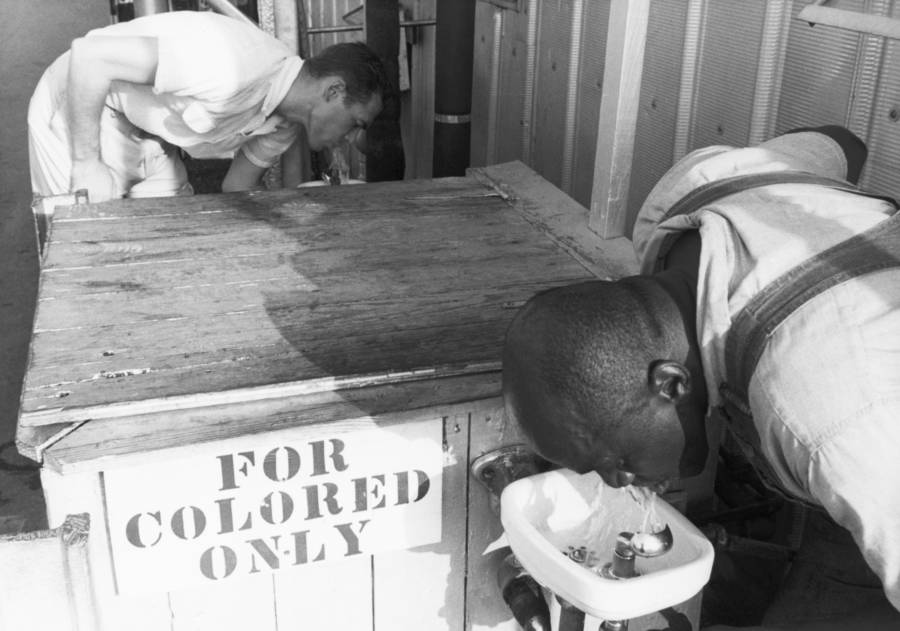Civil Rights activism in the US
I wanted Electra to learn about the civil rights movement in the United States and the brave men and women who came before her and helped win the rights she had previously taken for granted. When slavery was abolished in the US in 1865, the ‘Black Codes’ were introduced in the South, dictating harsh segregation policies for black and white: everything from schools, jails, cemeteries, theatres, water fountains, pools and even to phone booths.

Segregated drinking fountains
Though you will no doubt have heard of Martin Luther King and Malcolm X, both of whom were assassinated for speaking up for the rights of others – the fight for civil rights started long before the NAACP (National Association for the Advancement of Coloured People) was founded in 1909. In The Sun Sister, the character Stella works for the NAACP, which still advocates for justice today.
One famous member of the NAACP was Rosa Parks (Stella’s daughter is named after her). She joined in 1943 as secretary and it was an act of defiance in 1955 that led to Rosa Parks becoming known as ‘the first lady of the Civil Rights movement. Parks got on a bus in Montgomery and sat in the designated ‘colored’ section. As the bus filled up, the bus driver moved the ‘colored’ section sign behind her, to make more room for white passengers. But Parks refused to move her seat and was arrested.

Martin Luther King

Rosa Parks being fingerprinted after her arrest in 1955 for refusing to vacate a bus seat.
This sparked the Montgomery bus boycott where, in solidarity with Parks, the black population of Montgomery refused to use public transport, and 40,000 African Americans chose to walk everywhere instead.
As well as honouring Rosa Parks’ legacy in The Sun Sister, I also wanted to cast a light on the lesser-known but equally inspiring figures such as Beatrix Hamburg, who was the first African American woman to attend Vassar College and Yale Medical School. She features as a character in The Sun Sister, and you can hear her talk about her experiences in this video.
Peaceful protests of the late 50s and early 60s culminated in the ‘The March on Washington for Jobs and Freedom’ in 1963 – 250,000 people took part, and Martin Luther King gave his seminal speech in front of the Lincoln Memorial:

I have a dream that one day this nation will rise up and live out the true meaning of its creed: “We hold these truths to be self-evident; that all men are created equal.”
I have a dream that one day on the red hills of Georgia the sons of former slaves and the sons of former slave owners will be able to sit down together at the table of brotherhood…
You can read the full speech here:

Peaceful protesters linking arms at the March on Washington
When the Civil Rights Act was finally passed in 1964, it marked a pivotal change: no employer could discriminate on the basis of race, colour, sex, religion or national origin. This paved the way for the NAACP to legally challenge injustices in education, housing policies, criminal law, and more.
We cannot forget that the progress made in the past 100 years is simply because of ordinary people coming together and fighting for what they believe in. Their stories are both humbling and inspiring.
